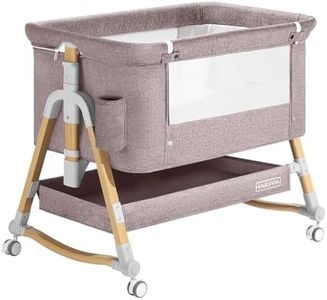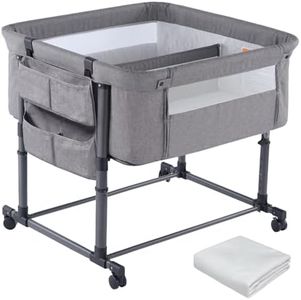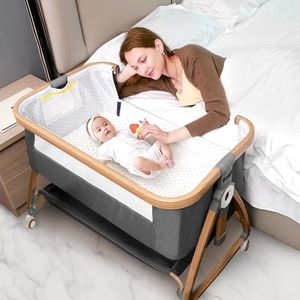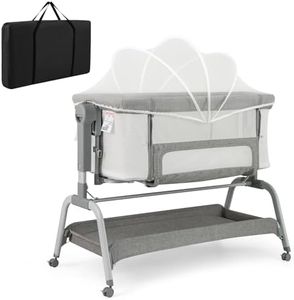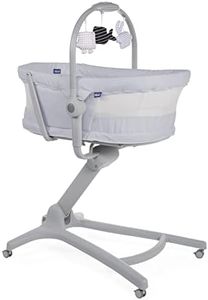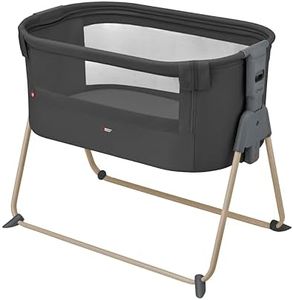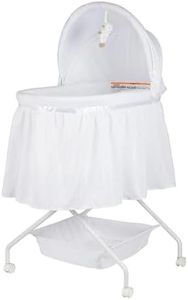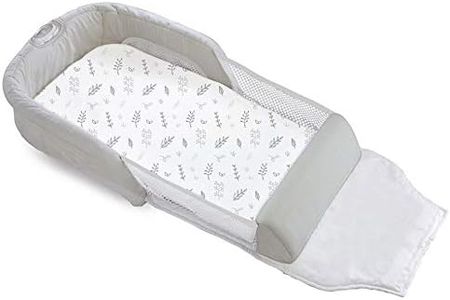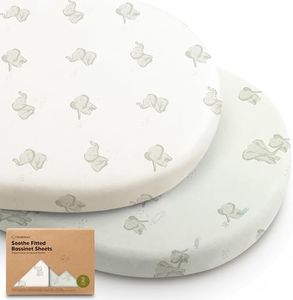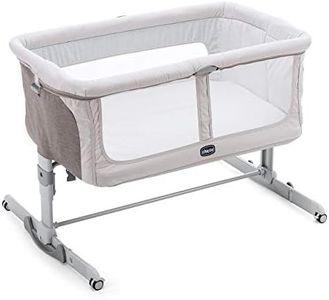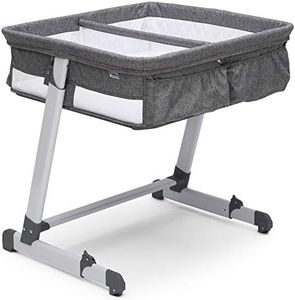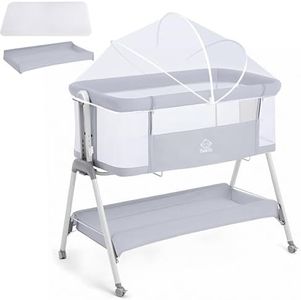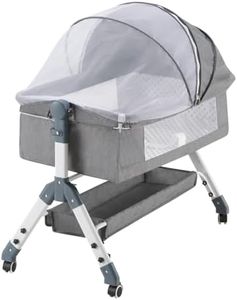We Use CookiesWe use cookies to enhance the security, performance,
functionality and for analytical and promotional activities. By continuing to browse this site you
are agreeing to our privacy policy
10 Best Baby Bassinets
From leading brands and best sellers available on the web.Buying Guide for the Best Baby Bassinets
Choosing the right baby bassinet can give your newborn a safe, cozy, and convenient place to sleep during the first months of life. When starting your search, keep in mind your lifestyle, living space, and how you plan to use the bassinet. Some bassinets are designed to be stationary, while others are portable or have extra features for easy access to your baby at night. Understanding different features and specifications will help you select a bassinet that fits both your needs and your baby's well-being.Size and PortabilityThe size of the bassinet determines how much space it takes up and how easy it is to move around your home. If you have a smaller room or plan to move the bassinet between rooms, a more compact, lightweight option is ideal. Some bassinets fold or have wheels, which can be helpful for portability. If you have more space or plan to use the bassinet only in one room, a larger or more stationary model might work better. Think about where you'll use the bassinet most and whether you'll need to move it frequently.
Safety StandardsSafety is the most important aspect of a baby bassinet. Look for certification or compliance with current safety standards; this ensures the bassinet is made with safe materials, has a stable structure, and has no dangerous gaps or openings. Some models have mesh sides for better airflow, reducing suffocation risk. Always focus on features that prevent tipping and keep the baby secure. Make sure to review the safety information for peace of mind.
Mattress Firmness and FitThe mattress in a bassinet should be firm and fit snugly against the sides to prevent gaps, which could be a hazard for infants. Too soft or ill-fitting mattresses can increase safety risks. When comparing bassinets, check how firm the mattress feels and whether it leaves space at the edges. Focusing on this helps ensure a safer sleep environment for your baby and makes cleaning the bassinet easier too.
Ease of AccessEase of access refers to how easily you can reach your baby, especially during nighttime feedings or diaper changes. Some bassinets are designed for side-sleeping with lower or drop-down sides, making it simple to tend to your child without getting out of bed. Others have taller sides or fixed walls. Consider how often you think you'll need to reach your baby at night and your own physical comfort.
Adjustable FeaturesSome bassinets offer adjustable height or incline positions. Adjustable height helps align the bassinet with your bed, making tending to your baby more convenient. Adjustable incline can help with issues like reflux but should be used with care. If you anticipate needing these features due to your own bed height or your baby’s needs, look for bassinets that offer easy and secure adjustments.
Storage and Extra FeaturesMany bassinets include storage pockets or baskets for diapers, wipes, and other baby essentials, which can be quite helpful for nighttime care. Some have soothing features like gentle rocking, vibration, or built-in music. Decide which extra features you'll really use; while not essential, they can add convenience or help soothe your baby, especially during the early months.
Weight Capacity and LongevityBassinets have recommended maximum weight and age limits. It's important to check these to ensure your bassinet will be safe as your baby grows. Some are suitable only for the first three or four months, while others can be used a bit longer. If you want a product that lasts as long as possible before your baby transitions to a crib, look for a bassinet designed with a higher weight or age limit.
